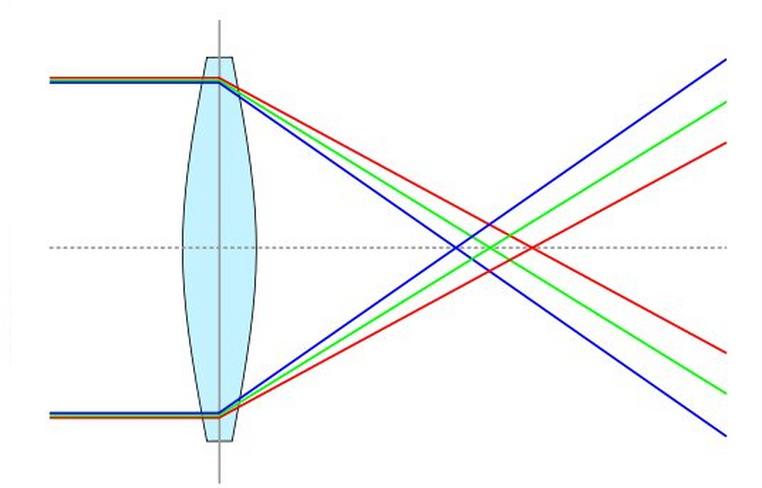Chromatic aberration - Binoculars
Chromatic aberration is a type of optical distortion in lenses and lens systems, which is caused by the lens failing to focus various wavelengths of light (colours) onto the same convergence point.
The focal length of a lens is determined by allowing a parallel beam of light to pass through a lens. The light is bundled onto the focal point. The distance from the focal point to the optical axis of the lens or lens system is the focal point distance. If there was no dispersion, the focal point for all colours of light would be at exactly the same distance. But, unfortunately, light with a short wavelength (the violet side of the spectrum) is diffracted more strongly than light with a long wavelength (the red side of the spectrum). If the focal point distance of a lens is determined by green light of approximately 550 nanometres, then the actual focal point distance for light of around 400 nm (violet) is shorter and for red (approximately 750 nm), a little further away. This causes images to appear slightly blurred.
Chromatic aberration can be corrected by using lenses with mutually opposite chromatic aberrations and by using types of glass with low dispersion.
Binoculars that are corrected for chromatic aberration are referred to as achromatic (corrected for two colours) or apochromatic (corrected for three colours).








